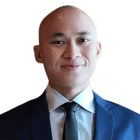Commentary: Trump left the Middle East with plenty of deals, except the one he wants most
United States President Donald Trump recognised the influence of the three countries he visited in advancing his stability-for-prosperity agenda, says NUS Middle East Institute’s Clemens Chay.

President Donald Trump walks with Saudi Crown Prince Mohammed bin Salman during an arrival ceremony at the Royal Terminal of King Khalid International Airport in Riyadh, Saudi Arabia, May 13, 2025

This audio is generated by an AI tool.
SINGAPORE: United States President Donald Trump received lavish receptions across Saudi Arabia, Qatar and the United Arab Emirates (UAE) during his recent Middle East tour. From the roll-out of lavender carpets in Riyadh to the parade of camels in Doha, the biggest prize was the mega-deals he walked away with.
At a time when his administration faces tough questions over tariff policies, these could well help to inject optimism into the American economy. But for all the multibillion-dollar commitments and chumminess on display, Mr Trump left the Gulf without the prize he perhaps seeks more than any other: Peace in the region.
Despite the business focus of Mr Trump’s visit, the Gulf-US summit convened the heads of states of the Gulf Cooperation Council (GCC), of whom some are, or have been, directly involved in conflict theatres. Saudi Arabia helped facilitate Russia-Ukraine talks, Qatar continues to mediate between Israel and Hamas, and Oman serves as a quiet intermediary between the US and Iran.
While Mr Trump expressed adulation for Gulf policies and leaders, there is, more importantly, a recognition of the influence, and resonance, that the countries he visited have in advancing his stability-for-prosperity agenda.
MONEY TALKS … AI
Mr Trump concluded his Gulf programme having secured “historic” levels of investment commitment: US$600 billion with Saudi Arabia, US$243.5 billion with Qatar, and US$200 billion with the UAE. Artificial Intelligence (AI) was a key priority in these deals, particularly for Riyadh and Abu Dhabi.
The Trump administration saw economic opportunities in opening the door to America’s most advanced technologies, drawing a contrast with the Biden administration, which viewed the Gulf as a backdoor for China to gain access to the computing power that drives AI.
Mr Trump’s AI tsar, David Sacks, tweeted about how building a large AI ecosystem with US partners will “cement American technology as the global standard”. Putting words into action, the US Department of Commerce moved recently to rescind the Biden-era AI Diffusion Rule, which would have imposed caps and “burdensome” regulatory requirements on US chip exports.
For Saudi Arabia and the UAE, which have ambitious AI targets, the agreements will provide an extra boost to their respective national strategies.
Just a day before Air Force One landed on Saudi soil, the Kingdom launched Humain, a state-backed AI firm tasked with propping up the country’s massive AI infrastructure. Humain has now moved to tap the American companies Nvidia, AMD, Amazon Web Services (AWS), Cisco and Qualcomm.
The UAE, meanwhile, seized what the diplomatic adviser to the UAE president described to CNN as a “once-in-a-lifetime opportunity to become a significant contributor in AI and advanced technology”.
In a bid to become the regional tech hub, Abu Dhabi also sent its national security adviser, to the White House earlier in March to close a 10-year, US$1.4 trillion investment deal with Washington. Abu Dhabi’s 5-GW data centre campus, unveiled during Mr Trump’s visit, will make OpenAI its primary anchor tenant.
BOEING AND DEFENCE, THE CHIEF BENEFICIARIES
If spending big was required to make the US President think harder about American security commitments – the top item on the Gulf states’ wish list – the Saudi, Qatari and Emirati leaders proved they understood the assignment.
Among the CEOs in the entourage, it was Boeing CEO Kelly Ortberg who got the biggest fillip.
The American aircraft manufacturer, together with GE Aerospace, secured a landmark order from Qatar Airways - a US$96 billion agreement to acquire up to 210 planes and more than 400 engines. A similar deal worth US$14.5 billion was struck with Abu Dhabi-based carrier Etihad Airways, bringing total Boeing sales announced during Mr Trump’s trip to 268 aircraft.
Boeing has endured a rough couple of years, not least because of safety concerns, and the fact that Europe’s Airbus has outpaced it in plane orders for five straight years.

The defence industry also had a field day. Qatar signed a US$1 billion deal to acquire counter-drone capabilities from Raytheon, on top of its US$10 billion investment in Al-Udeid Air Base, and other defence-related deals.
The White House also announced the “largest defence sales agreement in history”, a US$142 billion deal with Saudi Arabia. Just days after Mr Trump left Abu Dhabi, the US and the UAE inked an accord formalising a Major Defense Partnership covering military cooperation and joint development, among other things.
This reveals that for the Gulf Arab states, Washington remains the region’s undisputed security guarantor, and that they sought to reverse the Biden Administration’s move towards rightsizing the US’ forward presence in the Middle East, which resulted in perceived American unreliability.
IS REGIONAL STABILITY STILL ELUSIVE?
The hard evidence that securing the peace in the Middle East is far from reality is everywhere.
As soon as Air Force One was wheels up for Washington, Israel expanded its offensive on Gaza, with Prime Minister Benjamin Netanyahu vowing to take the territory under full control. The US itself may have achieved a ceasefire with the Houthis in Yemen, but the rebels have not ceased being a thorn in Israel’s side.
Meanwhile, US-Iran nuclear talks have gone through five rounds, with the latest wrapping up on Friday (May 23) and still little sign that a deal will be struck. In Syria, the Islamic State is proving itself to be a nascent threat.
Mr Trump’s approach has also raised eyebrows about American priorities in the Middle East.
He pulled off a deal with the Houthis to restore freedom of navigation in the Red Sea, and the US has had direct peace talks with Hamas. Both bypassed Israel. Ongoing US-Iran talks are also supported by the Gulf states, which have been in détente with Tehran for the past several years – but again ignored Israeli concerns.
Yet, the lingering question remains: is Mr Trump’s strategy self-serving, or for the region’s benefit? The response is tilted largely in favour of the former.
While the president has cashed in with the Gulf monarchies, the region is no closer to peace than before he took office. Nor can peace be achieved with money, however eye-watering the sums.
The Gulf states’ moment in the sun does have a price tag, however. If the key to peace is for the region to take ownership of its own destiny, it is increasingly likely that they will have to pave the way.
Clemens Chay is Research Fellow at the Middle East Institute, National University of Singapore.


















